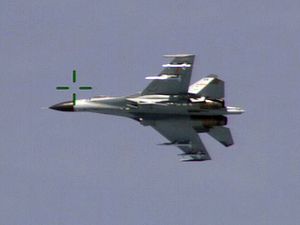Sunlight is the best disinfectant when dealing with people who take certain, er, liberties with the truth. If a picture is worth a thousand words; a video clip speaks volumes. Pick your favorite expression for deploying factual evidence to debunk mythmaking. In a war of conflicting narratives such as the one raging across the China seas, the spokesman who produces hard evidence commands an edge over one who can only resort to bluster. Video placed in context beats a shouting match any day.
Which is why the Naval Diplomat advises any sea or air force that operates at close quarters with Chinese ships, aircraft, or personnel to take video — and display it when need be. Record all encounters with People’s Liberation Army units, sure. But also record run-ins with the China Coast Guard, Chinese shipping or energy firms, even the fishing fleet. Together these military and non-military, official and unofficial organizations constitute the long arm of Chinese sea power.
They’re also political implements whereby Beijing prosecutes “three warfares” — legal, media, psychological — against its Asian rivals and extraregional powers such as the United States. For example, Beijing stakes its claim to “indisputable sovereignty” in the South China Sea, deploys non-military (and sometimes military) assets to police sea areas it claims, and acts put-upon if, say, Manila has the temerity to dispatch coast-guard assets of its own or file a case with the Law of the Sea Tribunal. If successful, three-warfares tactics dishearten or overawe opponents into submission.
In part, theatrics like these are classic Chinese tactics; in part, they’re classic communist tactics. These are people who believe you invent your own truth by saying the same thing over again and again with the utmost petulance. Admiral Turner Joy, who headed the UN delegation to armistice talks in Korea reported that Chinese and North Korean emissaries got their way by being as wearisome as possible. They repeated their demands — however outlandish — until their UN interlocutors capitulated just to shut them up. Any parent with a bratty kid can relate.
But it’s tough for Chinese officialdom or punditry to manufacture a false reality about, say, harassment of Vietnamese, Japanese, or American units when Vietnamese, Japanese, or American spokesmen splash video footage across as many media outlets as possible. U.S. and friendly governments should wage three warfares of their own. Let news consumers decide whether to believe their lyin’ eyes or some PLA mouthpiece.
Prompting this little outburst, of course, are revelations that PLA Air Force fighter jets have been harassing U.S. Navy reconnaissance aircraft over the South China Sea. Last week, for instance, U.S. officials took Chinese flyboys to task for “unsafe and unprofessional behavior” earlier this month, in international airspace east of Hainan Island. A PLA J-11 reportedly crossed in front of a U.S. P-8 Poseidon anti-submarine plane, a modified Boeing 737. It executed a barrel roll in close proximity to the lumbering American jet, and otherwise hotdogged nearby.
True to form, Chinese spokesmen and commentators managed to both deny the aerial incident and fault the American aircrew for it. For many years — EP-3 incident, anyone? — Beijing has clamored for a halt to surveillance flights and other activities explicitly permitted under the law of the sea. To all appearances it wants to redefine offshore waters — even waters way offshore, down in Indonesia’s environs — as China’s territorial seas, commensurate with its claim to indisputable sovereignty. In other words, it wants Chinese domestic law and policy to rule there — vitiating freedom of the seas and skies.
To their credit, Chinese officials have been laudably consistent about all of this. They tell the outside world what they mean to do, and they set out to do it — albeit without giving away their methods. So for heaven’s sake, let’s quit making excuses on China’s behalf. Occam’s Razor says choose the simplest model that fits the available facts. If something looks like a duck, walks like a duck, and quacks like a duck, it’s a duck … unless and until proven otherwise. A PLA Air Force squadron doesn’t go rogue over and over again, as some Western commentators speculated following the P-8 incident. China will not sacrifice what it considers its vital interests in the China seas for the sake of a secondary goal like cordial military-to-military ties with the United States.
From now on let’s assume Chinese mariners and airmen are acting on oft-stated Chinese policy when encounters occur. If U.S. or friendly forces are at fault in such episodes, senior leaders should own up to it. If Chinese representatives play fast and loose with the facts, then produce video evidence. They may deny it, claim it was Photoshopped, or whatever. But the burden will shift to them of avoiding looking like Baghdad Bob — of convincing viewers their eyes deceive them.
Beijing Bob, call your office!

































